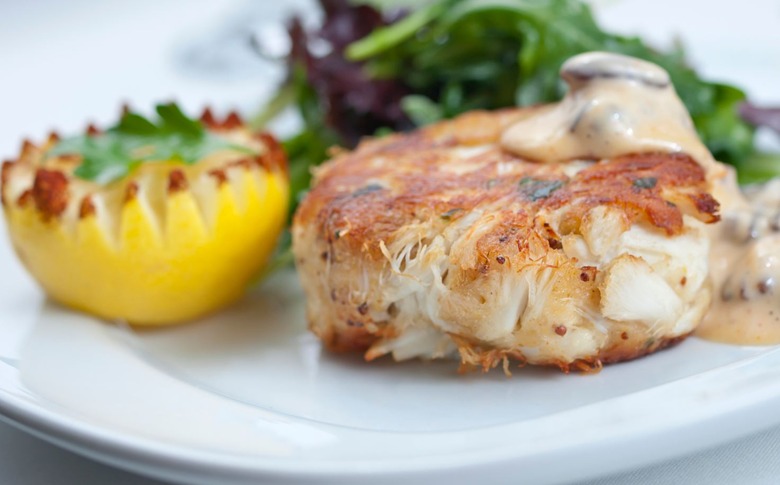These 3 Common Dishes Will Tell You Whether A Chef Is Really Good Or Not
It's not always easy to gauge the quality of a restaurant or the talent of its kitchen crew until you order something. But there are plenty of dishes that will only give you a basic idea of the talent going on behind the scenes; anyone can make a sandwich or cook a piece of fish. But there are three dishes that can really help you gauge the quality of a restaurant, largely because they're a lot harder to make perfectly than it appears: a crab cake, a Caesar salad, and an omelette.
Crab cakes, when made properly, are delicious, but there are many places to go wrong. It should be full of fresh crab, in big chunks, simply seasoned, and bound together with bread crumbs and egg or mayo, and not much else. If it's fried in the wrong oil or at the wrong temperature it'll be greasy; if the crab is fake or canned (or if it's overloaded with binders) it'll be obvious; and the care put into what it's served with (homemade remoulade versus jarred cocktail sauce, for example) is also important. It's for these reasons that Gordon Ramsay often orders the crab cake at a restaurant before trying anything else.
For some, making a Caesar salad just means tossing some lettuce with jarred Caesar dressing. But at good restaurants, the dressing is made in-house (preferably to order, tableside), from anchovies, garlic, egg yolks, lemon juice, salt and pepper, maybe a little mustard, olive oil, and Parmigiano-Reggiano; the croutons are house-made; and the salad should consist of whole romaine hearts. If the kitchen is putting care and attention into making this classic dish, they're most likely also doing other dishes right.
And as any short-order cook will tell you, omelettes are also really difficult to make properly. A classic French-style omelette (as opposed to the kind you'll get at your local diner, filled with American cheese) is famously the dish that French chefs would use to test prospective hires, because it requires so much technique and finesse. The eggs need to be beaten the right amount, the pan needs to be the right temperature (as does the butter in it), and the eggs should form a small curd with a soft and creamy texture. The omelette should be cooked through (but slightly runny in the center and not browned at all) and properly folded and plated, and the fillings should be appropriate and proportional.
